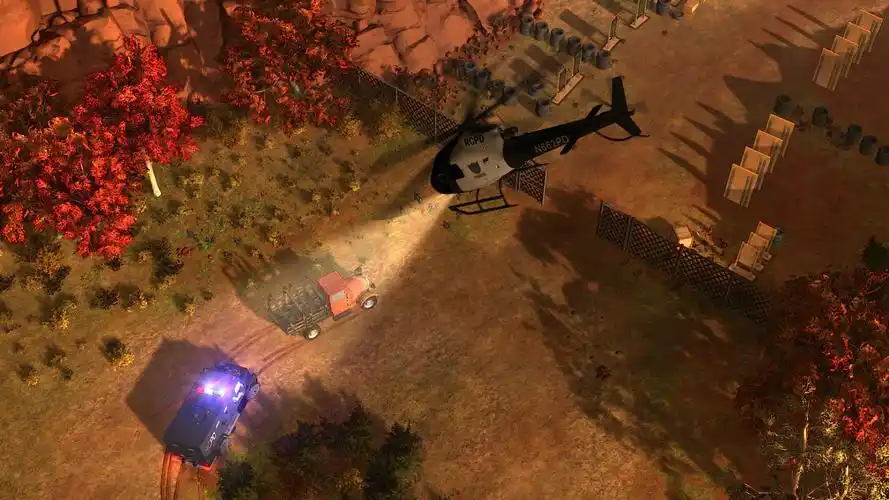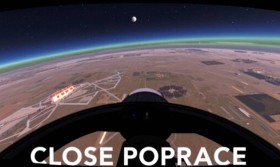Of Vengeance and Vistas: The Quiet Catharsis of the Shelter Sign Installer
The air in the VR headset is always still, a sterile, climate-controlled nothingness that stands in stark contrast to the digital worlds it conjures. For a generation, virtual reality has been synonymous with adrenaline: the heart-pounding thrill of zero-g dogfights, the gut-wrenching terror of zombie hordes, the sweaty-palmed tension of defusing a bomb. We built simulators to experience everything we couldn’t, or shouldn’t, in the real world. And then came the quietest, most profound revolution of all: the Forgiveness Overload Shelter Sign Installer Simulator VR, and its latest, masterful Place Missions Expansion.
This isn't a game. It’s a therapy session disguised as a job. The premise is deceptively simple. You are a contractor in a near-future world recovering from the "Great Estrangement," a period of hyper-polarized conflict not unlike our own, but amplified by advanced weaponry and pervasive surveillance. The conflict wasn't ended by a decisive victory, but by a collective, exhausted societal breakdown. The solution? The "Forgiveness Overload" protocol. Not a law, but a cultural mandate: to physically and symbolically rebuild, one act of mundane kindness at a time. Your role is to install the illuminated signs designating newly designated safe zones, community hubs, and reconciliation centers—Forgiveness Overload Shelters.
The base game was meditative. You’d arrive at a serene, sun-dappled plot of land, unpack your tools, and methodically assemble the elegant, solar-powered signpost. The physics were impeccable—the weight of the composite alloy posts, the satisfying click of magnetic connectors, the delicate wiring of the soft, blue-hued LEDs. The only sound was the whisper of the wind, the chirping of digitally reconstructed birds, and your own measured breathing. It was a power fantasy not of destruction, but of creation. Of leaving a place more beautiful, more hopeful, than you found it.
The Place Missions Expansion shatters this peaceful paradigm, not with violence, but with context. And in doing so, it elevates the simulator from a curious novelty to a masterpiece of interactive storytelling.
The expansion introduces a new mode: "Historical Placement." You are no longer installing signs on blank, idealized plots. You are tasked with returning to the exact coordinates of some of the conflict's most infamous incidents. The first mission loads, and the familiar tranquility is gone. You stand at the edge of a bombed-out town square. The geometry is familiar from a thousand news streams—this is the Plaza of Sighs, where a miscommunication between militia groups led to a catastrophic firefight that claimed hundreds of civilian lives.
The air is thick with digital dust motes dancing in the hazy light. The skeletons of buildings stand as grim sentinels. Your toolbox feels heavier. Your objective isn’t just to install the sign; it’s to choose where to place it.
This is the core mechanic of the expansion, and it’s utterly brilliant. A waypoint marker doesn’t hover over the "correct" spot. Instead, your interface provides you with archival data: news footage, civilian testimonials, drone sweeps of the incident. You see the square as it was, vibrant and alive. You see the horror as it unfolded. You listen to the arguments from different factions on where the memorial—for that is what the sign truly is—should stand.
One group argues for the center of the square, the epicenter of the blast, for maximum visibility and raw impact. Another, comprised of survivors' families, petitions for a quieter corner near a destroyed playground, a place for contemplation, not spectacle. A third, weary historical pragmatists, suggest the entrance to the square, a forward-looking gesture for the community that will eventually rebuild here.
The weight of the decision is immense. You walk the ruined plaza, your boots crunching on virtual rubble. You look at the scorch marks on a wall. You stand where a sniper’s nest was located. This is no longer a simple assembly puzzle; it’s an ethical and emotional labyrinth. There is no "winning." There is only choosing, and living with the consequence of that choice.

After an hour of deliberation, you choose the spot near the playground. It feels right. The installation process itself is now fraught with new meaning. Every drilled hole feels like a suture. Every connected wire feels like re-establishing a neural pathway in a traumatized brain. As you secure the final panel and the soft, blue light of the sign glows to life, it doesn’t feel like a victory. It feels like an acknowledgement. A scar, but a clean one.
The expansion features a dozen such missions. Placing a sign on the bridge where a famous peacemaker was assassinated, forcing you to balance the desire to honor her with the risk of creating a macabre tourist attraction. Installing one at a former propaganda broadcast tower, a place of pure hatred now being reclaimed as a beacon of reconciliation. Each mission is a deep, research-driven dive into a fictional yet hauntingly familiar tragedy.
The genius of the Place Missions Expansion is that it makes the act of forgiveness feel active, difficult, and physical. It’s not about saying words; it’s about hauling heavy posts across broken ground. It’s about the quiet focus required to solder a connection perfectly, a small act of precision in a place that knew only chaos. It’s the understanding that rebuilding isn’t about erasing the past, but about integrating it into a new, more hopeful foundation.
You log out, remove the headset, and the real world rushes back in. But something has shifted. The quiet is no longer just an absence of noise; it feels earned. You look at your own hands, the same ones that just virtually healed a digital wound, and you feel a profound sense of agency. The Forgiveness Overload Shelter Sign Installer Simulator VR: Place Missions Expansion doesn’t offer escapism. It offers something far more valuable: a blueprint for grace, and the strength to carry it.
Tags: #ForgivenessSimulator #VRCatharsis #EthicalGameplay #SlowGaming #NarrativeDesign #PostConflict #HealingGames #SimulatorGames #VRTherapy #PlaceMissions


















